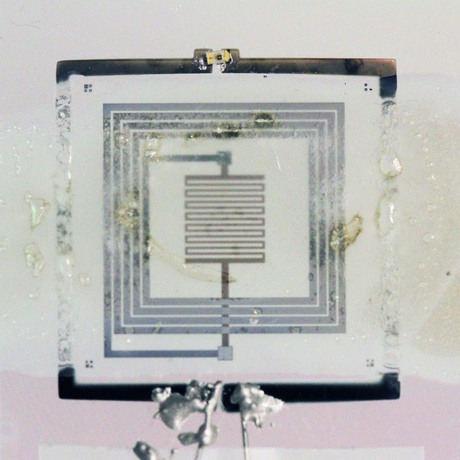"This e-waste will self-destruct"

Researchers from the University of Illinois have developed electronic devices that self-destruct when they reach a particular temperature. By breaking down devices to their molecular components, the researchers hope to reduce the amount of e-waste sent to landfill.
Writing in the journal Advanced Electronics, Professor Scott White and his team said they developed devices which utilise magnesium circuits printed on very thin, flexible materials. The researchers trap microscopic droplets of a weak acid in wax and coat the devices with the wax.
“Upon reaching the melting temperature of the acid, we release these acid droplets, destroying the electronics,” explained team member Hector Lopez Hernandez. “What this allows is for you to destroy your device whenever you’re done with it.”
The team developed a radio-controlled trigger that could remotely activate self-destruction on demand, embedding a radiofrequency receiver and an inductive heating coil in the device. The user can send a signal to cause the coil to heat up, which melts the wax and dissolves the device.
The researchers can control how fast the device degrades by tuning the thickness of the wax, the concentration of the acid and the temperature. Their devices can self-destruct within 20 seconds to a couple of minutes after heat is applied.
The devices also can degrade in steps by encasing different parts in waxes with different melting temperatures. This gives more precise control over which parts of a device are operative, creating possibilities for sophisticated devices that can sense something in the environment and respond to it.
Professor White’s group has long been concerned with device sustainability and has pioneered methods of self-healing to extend the life of materials. With this latest research, Professor White stated, “We took our ideas in terms of materials regeneration and flipped it 180°.
“If you can’t keep using something, whether it’s obsolete or just doesn’t work anymore, we’d like to be able to bring it back to the building blocks of the material so you can recycle them when you’re done; or, if you can’t recycle it, have it dissolve away and not sit around in landfills.”
Professor White said the use of temperature change to trigger destruction is just one of “a whole plethora” of possible methods, including electromagnetic waves or mechanical vibrations. His team plans to examine “a whole different spectrum of stimuli”, he said, to enable similar device destruction.
Merger strengthens RSK Australia's regional services
Projence and Western Project Services have merged under the Projence brand, to improve the...
Reaching net zero in the manufacturing sector
Sustainable solutions such as 'green concrete' and carbon tracking were presented at the...
Reducing upfront carbon in built environment: report
ASBEC has released a report aiming to reinforce and amplify government and industry efforts...










